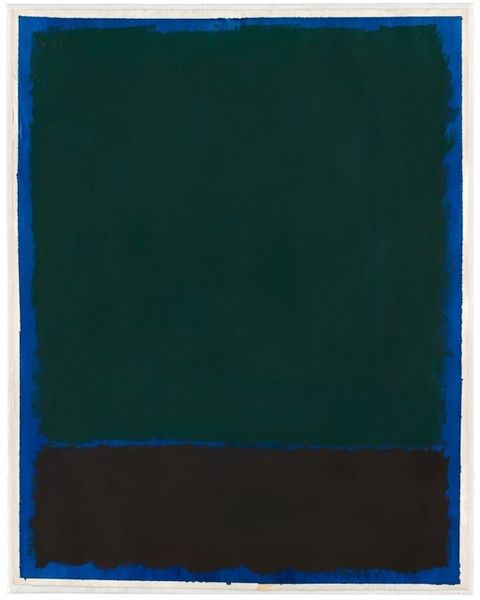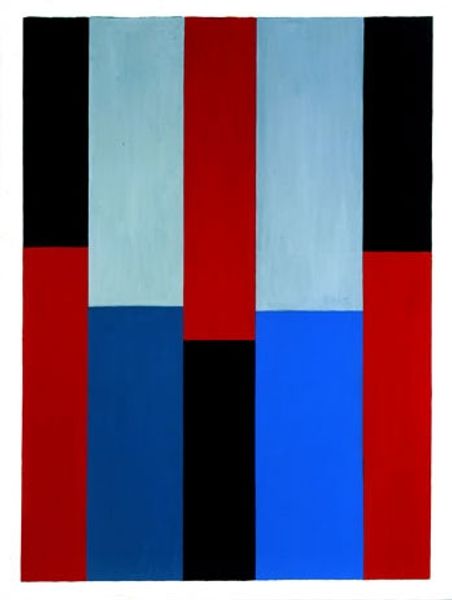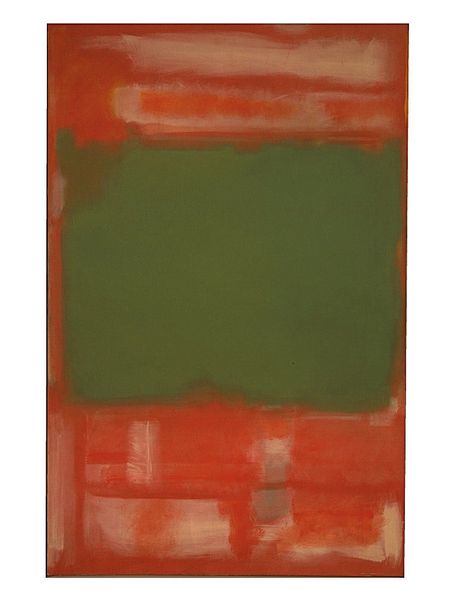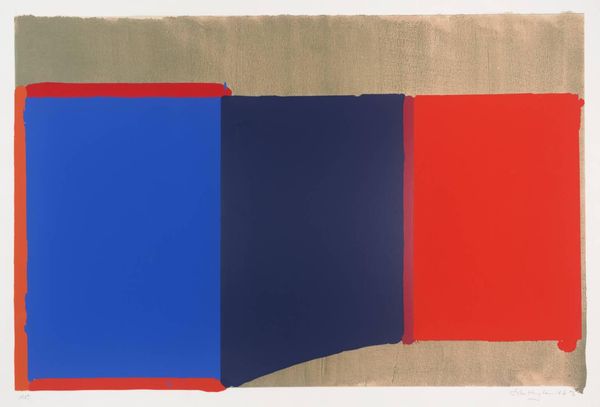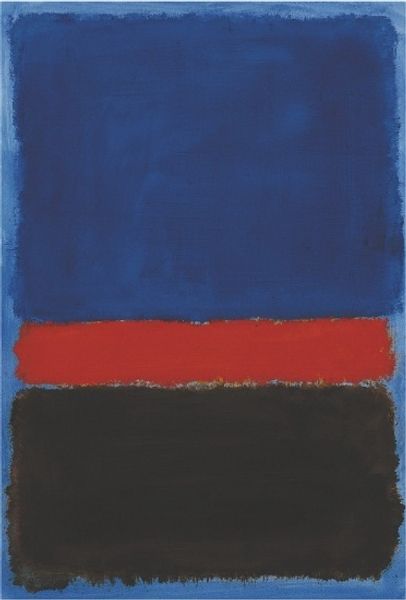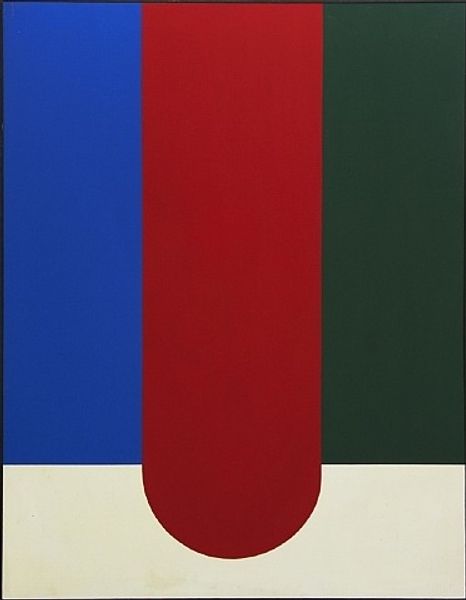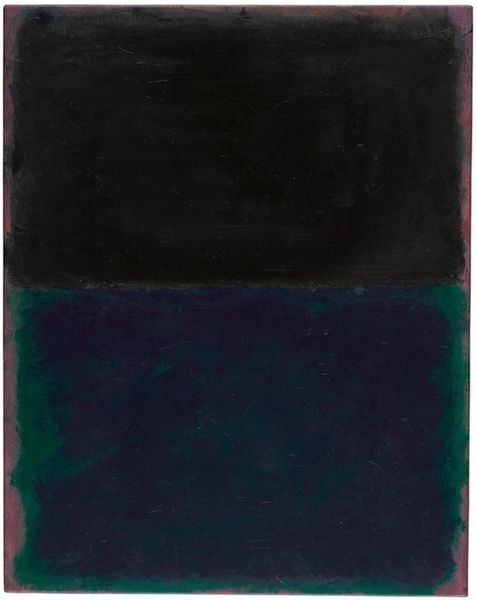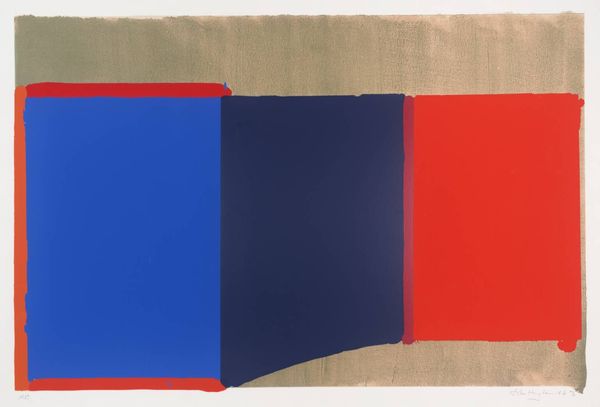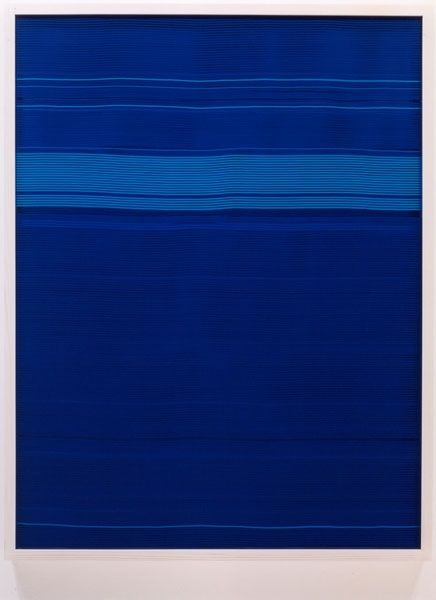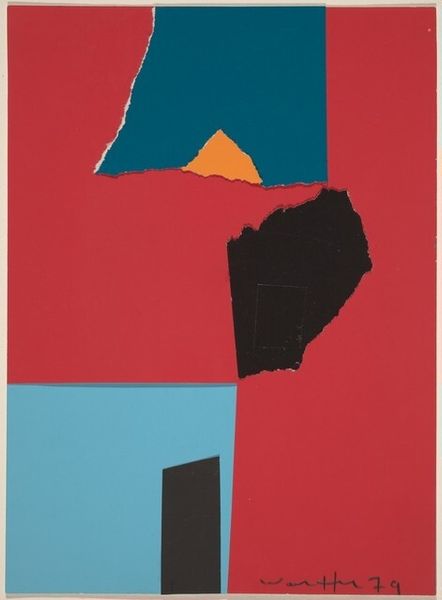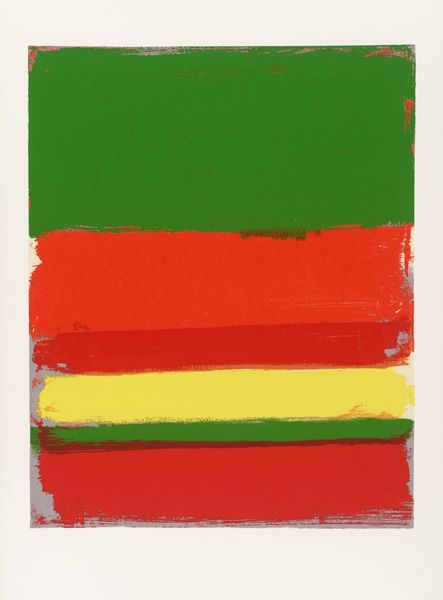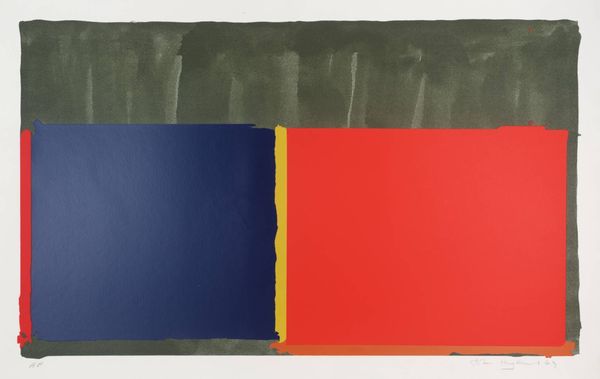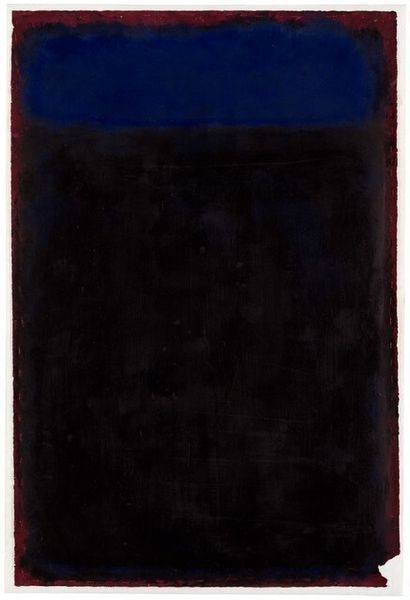
Copyright: Doug Ohlson,Fair Use
Curator: Standing before us is Doug Ohlson's "Two-Four," painted in 1983, a striking example of Color Field painting rendered in acrylic. What strikes you about it at first glance? Editor: There's a deliberate crudeness to the application, wouldn't you say? It almost looks like a child's painting—but in the most sophisticated way. The tension between careful composition and careless execution intrigues me. Curator: The rough edges, the almost uneven application of the acrylic, lend it an interesting materiality. Ohlson often explored the dynamic relationship between form and color, and here, the red, blue, and black rectangles generate a palpable energy within the teal border. It's not just about what's there, but also how these shapes interact with the surrounding negative space. Editor: Agreed. The 'how' of it is everything. The layering of the acrylic is uneven and unpolished; you can practically feel the labor, the deliberate strokes, almost a rejection of slick, mass-produced perfection. It invites you to consider the artist’s hand, the making, the simple use of pigments. Curator: Indeed. Considering Clement Greenberg's influence on color field painting, the flatness and the emphasis on the canvas itself become key elements. Ohlson seems to be both embracing and subverting that, doesn’t he? By acknowledging the raw application of the medium, he creates this push-and-pull. Editor: Absolutely. It’s almost as though Ohlson is drawing attention to the production of abstract expressionism itself, revealing its constructedness. We’re confronted with the labor and materiality typically hidden beneath a veneer of artistic genius. How much acrylic paint went into it? How long did he actually work at painting the colours and that deliberate frame of paint that contains it all? These considerations, this process-centric gaze, humanize the piece and highlight Ohlson's engagement with materials and the act of painting itself. Curator: Precisely. This juxtaposition adds another layer to our reading, beyond the pure formalism. It’s a dialogue, if you will, between artistic intent and material reality. Editor: It makes you wonder if all creative pursuits benefit from such close interrogation of not only 'what' is said, but also 'how' it's constructed. Curator: A valuable observation. Let's continue exploring how his paintings demonstrate this type of complex, intentional construction...
Comments
No comments
Be the first to comment and join the conversation on the ultimate creative platform.
